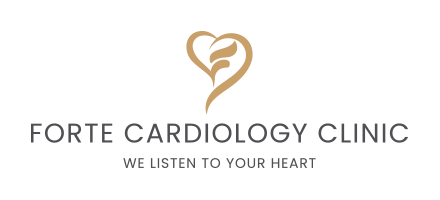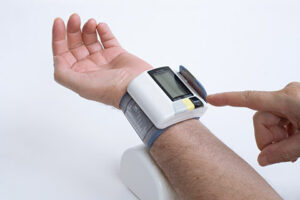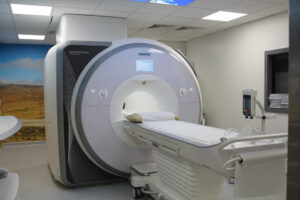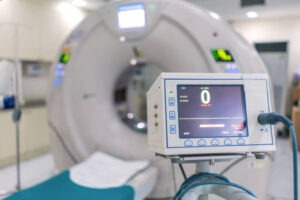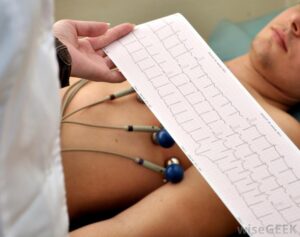Stress Echocardiogram stands out as a versatile and informative method, particularly adept at evaluating cardiovascular performance during activities that simulate the challenges of daily life. By dynamically assessing the heart’s response to stress, this diagnostic tool plays a pivotal role in identifying conditions such as coronary artery disease, evaluating the effectiveness of treatments, and guiding healthcare professionals in optimising patient care.
Understanding Stress Echocardiogram
A Stress Echocardiogram (Stress Echo) is a diagnostic procedure that combines echocardiography with physical stress to assess the heart’s response under challenging conditions. This non-invasive test provides dynamic, real-time images of the heart, allowing healthcare professionals to evaluate its function and detect abnormalities that may only become apparent during periods of stress.
How Stress Echo Works
The procedure involves inducing stress through either exercise or medication while conducting echocardiography. During exercise, the individual may walk on a treadmill or pedal a stationary bicycle, gradually increasing the intensity. Alternatively, medications can be administered to simulate the effects of physical exertion on the heart. The echocardiogram captures images of the heart at rest and during stress, enabling a comprehensive assessment of its structure, function, and blood flow patterns.
Indications for Stress Echo
Stress Echo is particularly useful in various clinical scenarios:
Detecting Coronary Artery Disease (CAD)
Stress Echo is valuable for identifying heart regions with reduced blood flow, indicating potential coronary artery disease. Abnormalities in the heart’s response during stress may suggest compromised blood flow to certain areas.
Evaluating Exercise Capacity
It provides insights into an individual’s exercise capacity and cardiovascular response to physical stress. This information is essential for assessing overall cardiovascular fitness.
Assessing Treatment Effectiveness
Stress Echo can evaluate the effectiveness of treatments for heart conditions, helping healthcare professionals determine if interventions are improving blood flow and cardiac function.
Diagnosing and Managing Heart Conditions
Stress Echo is employed in diagnosing heart valve disorders, cardiomyopathies, and heart failure. It aids in guiding management strategies for these conditions.
Risk Stratification
It assists in risk stratification, helping identify individuals at higher risk of cardiovascular events based on their response to stress.
The Stress Echo Procedure
Pre-Test Preparation
To prepare for a Stress Echocardiogram (Stress Echo), individuals may receive guidance on fasting before the test. Wearing comfortable clothing and appropriate footwear for potential exercise components, such as treadmill walking, is advisable. Clear medication instructions contribute to a smooth testing process, including whether they should be taken or withheld.
Baseline Echocardiogram
The Stress Echo procedure commences with a baseline echocardiogram, where the individual rests. This initial assessment provides a reference point for evaluating heart structure and function changes during stress. Images captured during this phase offer insights into the heart’s condition under normal conditions.
Stress Induction
Stress can be induced through either exercise or medication, depending on the individual’s health status and the test’s purpose. Individuals may walk on a treadmill or pedal a stationary bicycle for exercise-induced stress. Medications administered intravenously simulate the physiological effects of exercise on the heart. The goal is to increase the heart rate and induce stress to assess cardiovascular responses.
Real-time Monitoring
Throughout the stress-inducing phase and the recovery period, the heart is continuously monitored using electrocardiography (ECG) and echocardiography. ECG records the heart’s electrical activity, while echocardiography captures real-time images of the heart’s chambers, valves, and blood vessels. This simultaneous monitoring allows healthcare professionals to assess the heart’s response to stress, identify any abnormalities, and evaluate how quickly the heart returns to baseline during recovery.
Interpreting Stress Echo Results
Understanding the nuances of interpreting Stress Echo results enables healthcare professionals to diagnose and manage a spectrum of cardiovascular conditions. By leveraging the dynamic nature of stress-induced assessments, Stress Echo is a powerful tool in unravelling the intricacies of the heart’s response to challenging conditions.
Analysing Echo Images
Physicians analyse Stress Echocardiogram (Stress Echo) images by scrutinising the real-time visualisations of the heart’s chambers, valves, and blood vessels. Comparing these images to the baseline echocardiogram allows for a detailed assessment of changes in the heart’s structure and function induced by stress. This meticulous analysis aids in identifying potential abnormalities that may be indicative of underlying cardiovascular conditions.
Normal vs. Abnormal Responses
Distinguishing between normal and abnormal responses to stress is a critical aspect of interpreting Stress Echo results. Expected responses include a proportional increase in heart rate and improved contractility. Abnormalities may manifest as irregular heart rhythms, wall motion abnormalities, or reduced blood flow to certain regions. Identifying these deviations from the expected response is essential for a comprehensive assessment.
Diagnostic Value
Stress Echo holds significant diagnostic value by revealing specific conditions:
Ischemia Detection – Stress Echo is sensitive to detecting ischemia, which occurs when blood flow to the heart muscle is compromised. Changes in wall motion and blood flow patterns during stress can indicate areas of the heart not receiving adequate blood supply.
Abnormalities in Wall Motion – Deviations in wall motion, such as impaired contraction or thickening, can signify underlying cardiac conditions. Stress Echo’s ability to capture these abnormalities provides valuable diagnostic insights.
Identification of Heart Disorders – Stress Echo aids in the identification of various heart disorders, including coronary artery disease, valvular abnormalities, and cardiomyopathies. Abnormal responses to stress contribute to the diagnostic puzzle, guiding healthcare professionals in formulating accurate diagnoses and appropriate treatment plans.
Benefits of Stress Echocardiograms
Dynamic Assessment
Stress Echocardiograms offer a distinct advantage through dynamic assessment. Unlike resting evaluations, these tests provide insights into heart function during activity, allowing healthcare professionals to observe real-time responses to stress. This dynamic assessment is invaluable for uncovering cardiovascular issues that may remain latent during rest periods, offering a more comprehensive understanding of the heart’s capabilities.
Non-Invasiveness
The non-invasive nature of Stress Echocardiograms stands out as a key benefit. In contrast to invasive procedures like cardiac catheterisation, Stress Echo does not require the insertion of catheters or exposure to ionising radiation. This makes it a safer and more comfortable option for individuals undergoing stress testing. The absence of invasiveness contributes to widespread acceptance and accessibility, ensuring that a broader population can benefit from this diagnostic tool without unnecessary risks or discomfort.
